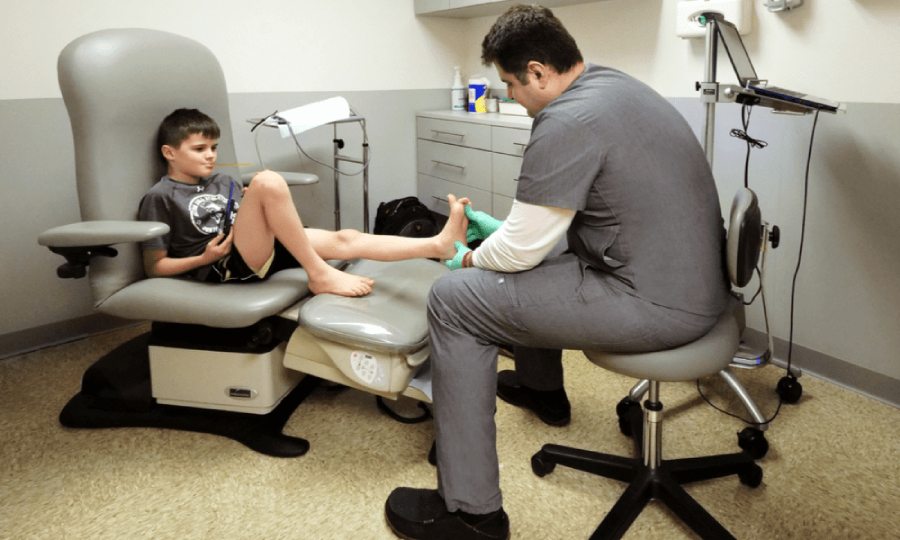Visiting a podiatry office can often be a crucial step in maintaining foot health and addressing various foot-related issues. Whether you’re scheduling a routine check-up or seeking treatment for a specific condition, understanding the etiquette expected in a podiatry office can contribute to a smoother and more effective visit. Here’s a comprehensive guide on what patients should know about podiatry office etiquette.
1. Appointment Scheduling and Arrival
One of the first aspects of podiatry office etiquette starts with scheduling appointments. It’s essential to call ahead and book your appointment in advance, especially if you require specific times or have urgent concerns. Respect the office’s scheduling policies and try to arrive a few minutes early to complete any necessary paperwork. This punctuality helps maintain the flow of appointments and ensures you receive adequate time with the podiatrist.
2. Communication with Office Staff
Upon arrival at the podiatry office, you will likely interact with office staff who handle check-ins, paperwork, and insurance details. Be courteous and provide any required information promptly to facilitate a smooth registration process. Clear communication with the staff about your symptoms, insurance coverage, and any changes to your contact information is crucial for accurate record-keeping and efficient service.
3. Respecting Privacy and Confidentiality
Podiatry offices, like all medical facilities, prioritize patient privacy and confidentiality. Respect the privacy of other patients by refraining from loud conversations in waiting areas and adhering to posted guidelines regarding cell phone use and photography. Understand that any discussions you have with medical staff or the podiatrist are confidential, and your information will be handled with the utmost discretion.
4. Preparing for the Appointment
To make the most of your time with the podiatrist, prepare relevant information about your foot health history, any medications you are taking, and details about your current symptoms or concerns. Bring along any relevant medical records or imaging results if requested by the office. This preparation helps the podiatrist gain a comprehensive understanding of your condition and facilitates an accurate diagnosis and treatment plan.
5. During the Consultation
During your consultation with the podiatrist, actively participate by asking questions about your condition, treatment options, and preventive measures. Listen attentively to the podiatrist’s recommendations and follow any instructions regarding foot care, medication, or lifestyle adjustments. Be honest about your symptoms and any factors that may affect your foot health, such as recent injuries or changes in activity levels.
6. Follow-Up and Treatment Compliance
After your appointment, follow any instructions provided by the podiatrist regarding medications, home care routines, or scheduled follow-up visits. Adhere to prescribed treatments and notify the office promptly if you experience any unexpected symptoms or concerns. Compliance with treatment plans is essential for achieving optimal foot health outcomes and preventing the progression of foot conditions.
7. Payment and Insurance
Understand the office’s policies regarding payment, insurance coverage, and any out-of-pocket expenses you may incur. Clarify billing questions with the office staff before proceeding with treatments or services to avoid misunderstandings. Keep track of your insurance paperwork and receipts for reimbursement purposes if applicable.
8. Feedback and Reviews
After your visit, consider providing constructive feedback to the podiatry office regarding your experience. Positive feedback helps acknowledge excellent service and professionalism, while constructive criticism can contribute to improvements in patient care and office operations. Additionally, leaving reviews online can assist other patients in choosing a podiatry office that meets their needs.
Conclusion
Navigating a podiatry office with proper etiquette enhances the quality of care you receive and contributes to a positive experience for both patients and medical staff. By following these guidelines on appointment scheduling, communication, privacy, preparation, and compliance, you can ensure that your visits to the podiatrist are efficient, effective, and supportive of your foot health goals. Remember, maintaining good foot health is a partnership between you and your podiatrist, built on mutual respect and clear communication.
Have A Look :-
- What Is A Probate Lawyer ?
- How Much Does It Cost To Make A Will?
- Navigating Deductions on Your USA Paystub: What’s Normal and What’s Not

